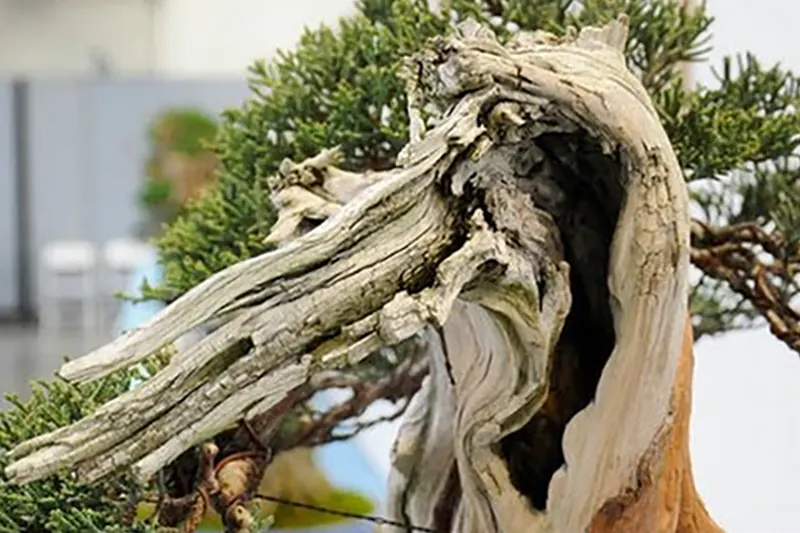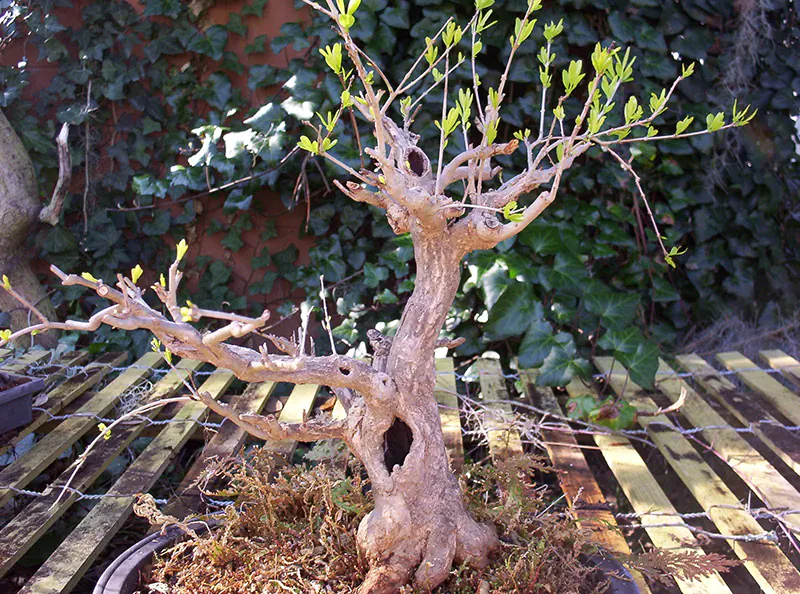Uro: What Is It and How Do You Achieve It?
The art of bonsai is just that – an art form. Bonsai masters take years to perfect their miniature trees to reflect what a mature tree in nature would look like on a miniature scale. Many of the best masters will tell you that work on a bonsai is never really finished.
There are always improvements that can be made to make the bonsai even more spectacular. This takes knowledge, experience, and a lot of patience to achieve. Not only do you have to care for your tree, but you also have to train it into the shape you want.
Finally, there are also other techniques you can use to add visual interest and make the tree appear older than it really is. One of these techniques is creating Uro, a specific type of deadwood.
In this article, we’ll take a closer look at the technique of Uro, what it is and how to achieve it in bonsai. Keep reading to discover more about this ancient technique.

What Is Uro In Bonsai?
Uro is a specific technique for creating deadwood. In Uro, the space where a branch has been removed will be hollowed out and preserved with lime sulfur to give it a unique aged look. Uro does occur in nature when sharp winds, storms, or lightning strike branches and completely rip them from the tree. Over the years, the wound would heal over, creating a hallowed look. Even as kids, we’re aware of this phenomenon.
Thinking back to my preschool days, I’m reminded of the countless pictures I drew featuring a tree with a hallowed section (usually where owls or squirrels would live). Bonsai masters have also remembered this and have taken to creating Uro in their bonsai to give the illusion of age while also adding some visual character to the tree.
Uro vs. Jin vs. Shari
Uro differs from the other two main types of creating deadwood in that it’s a simple hollow of where a branch used to be. In retrospect, Jin is the technique of creating deadwood on branches or the tree’s apex. Alternatively, Shari is when deadwood is created on the tree’s trunk. While these aren’t the only ways to develop deadwood in a bonsai, they are the most commonly used and easiest to achieve.
Jin and Shari often occur naturally on evergreen trees such as Junipers. As such, they fit well with evergreen species of bonsai. On the other hand, Uro is frequently seen on deciduous trees, making it a good technique for creating deadwood on these species.
It’s important to remember that while these are different techniques, they can sometimes be used together to create a stunning effect. For example, many stunning bonsai may feature the use of both Shari and Jin on the same tree.
Tools Needed To Create Uro
While the tools needed for creating Shari and Jin are pretty much the same, you’ll need some slightly different tools when creating Uro. Using a drill with an ordinary or router bit makes the process of creating the hollow much easier. However, with some effort and patience, you can achieve a nice Uro using only carving tools.
- Branch cutters or concave cutters
- Crafting drill with an ordinary drill bit or router bit
- Grafting knife
- Carving tools
- Lime Sulfur
- Black acrylic paint or India Ink
- Small brush
How To Achieve Uro In Bonsai?
Let’s take a look at how to start creating Uro in bonsai.
Step 1: Get All Your Tools Together
Get together all the tools you need and make sure that they are clean and sterilized. Whenever you remove branches or bark and basically create an open wound, you need to ensure your tools are clean so that you don’t introduce bacteria or infections into your bonsai.
Step 2: Evaluate Your Tree For Branches To Remove
You may already have an idea of which branches you want to remove. Perhaps it’s a sacrificial branch that’s done its duty and is ready to be removed? Remember to bear the front of your tree in mind. After all, creating an Uro in the back of your tree where it won’t be seen isn’t practical.
Step 3: Remove The Branch
Once you’ve evaluated your tree and decided on which branch to remove, cut it away using a branch cutter or concave cutter. A concave cutter will help you create an indent where you want the hollow to be.
Step 4: Create A Hollow Where The Branch Was
Now you can use your drill to create a deeper, more defined hollow where the branch was. If you don’t have a drill, you can use your carving tools. Don’t make a perfectly circular hollow as that will look unnatural. If you struggle to get a natural shape with only the drill, use the carving tools and grafting knife to refine the shape.
Step 5: Paint Hollow With Sulfur And Pain/Ink Mixture
Mix a bit of acrylic paint or India Ink with your lime sulfur. We recommend mixing in a separate container so that your lime sulfur remains clear for other projects. Use the mixture to paint out your hollow and seal it. We recommend adding some paint or ink because an Uro doesn’t look good when it’s white, as opposed to Jin or Shari, which can be striking in the white/light gray look. Adding a darker tint will make it appear more natural.
Final Thoughts
Creating deadwood can be a simple way to add some visual interest to your tree while also making it look much older. However, there are many different ways to create deadwood, and in order to use it effectively, we need to understand the differences between the types of deadwood techniques. Uro is a very useful technique to use with deciduous trees and creates a beautiful hollow that, once healed, adds a lot of interest and age to your bonsai.







